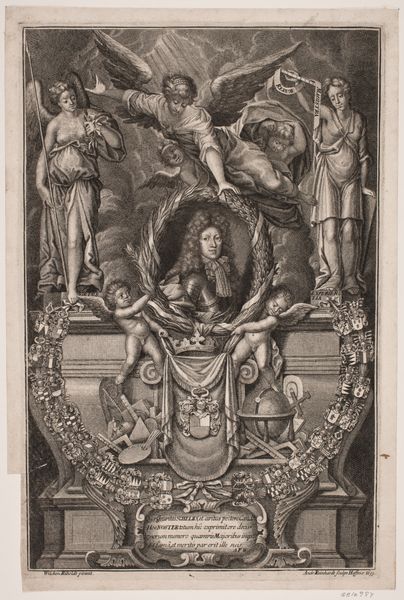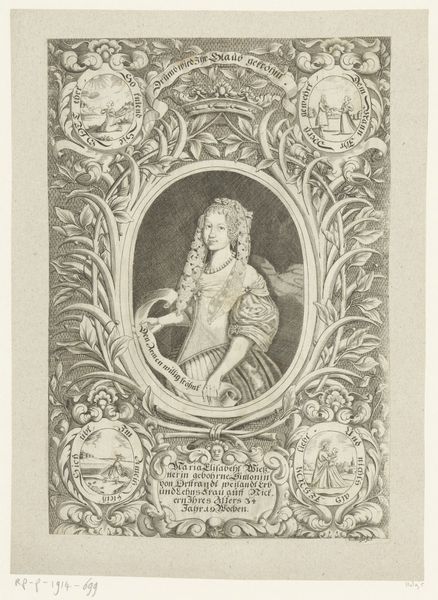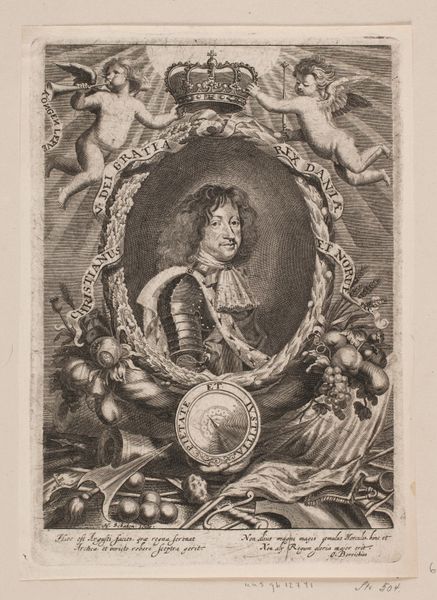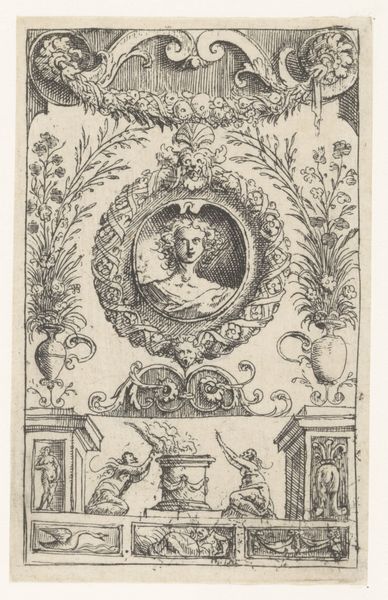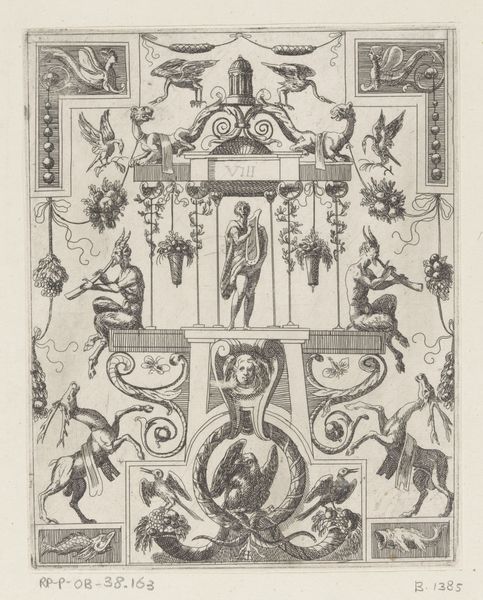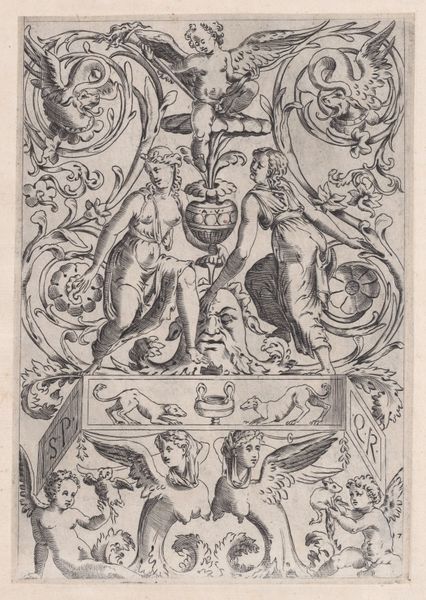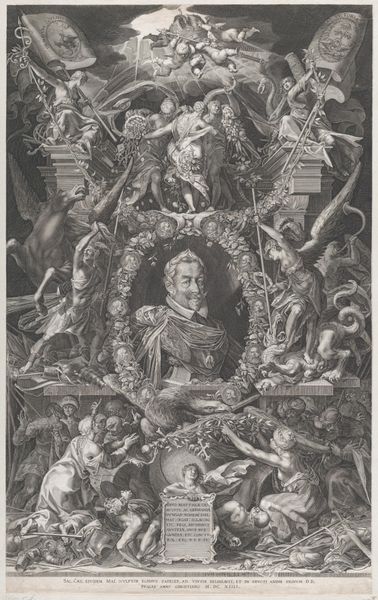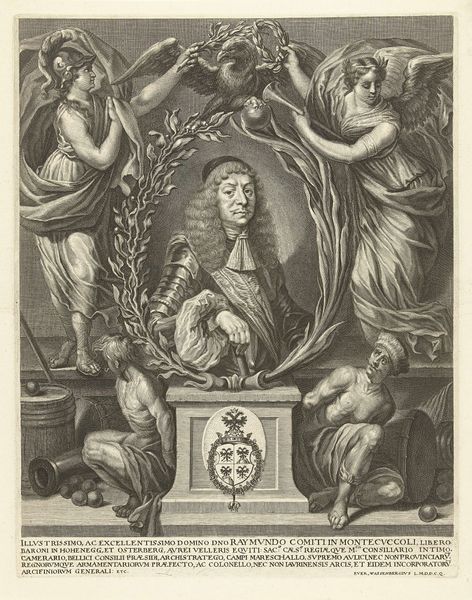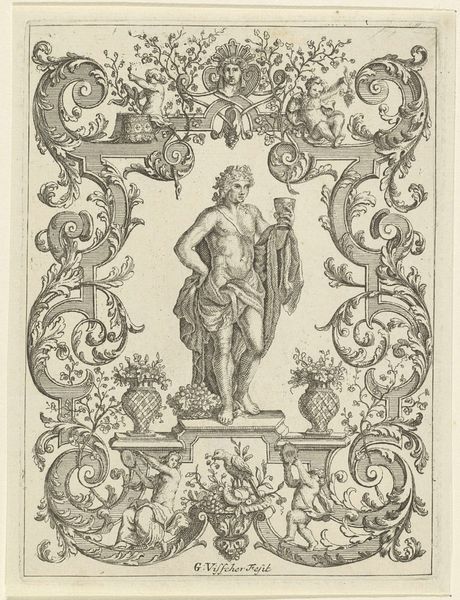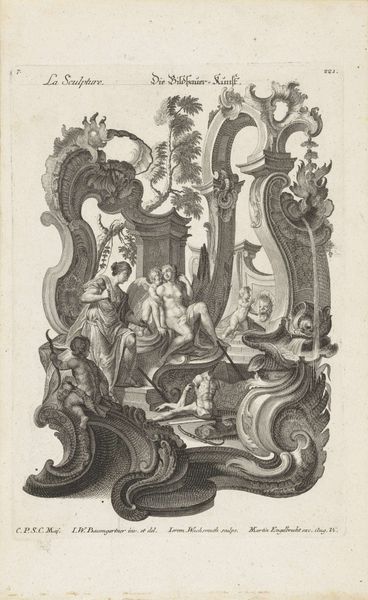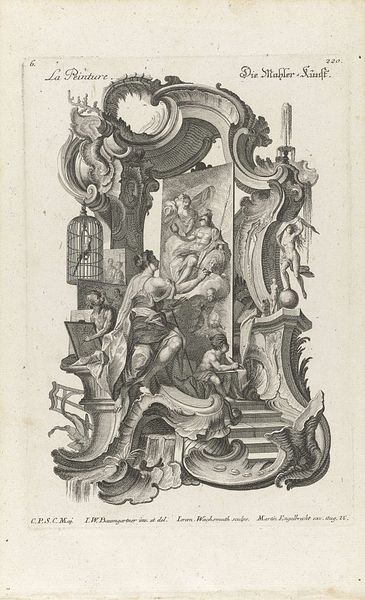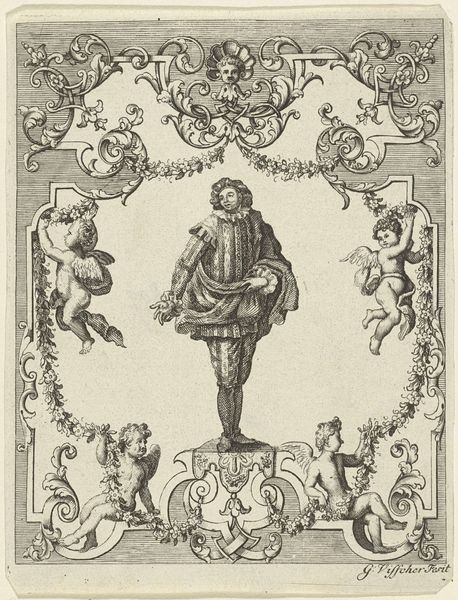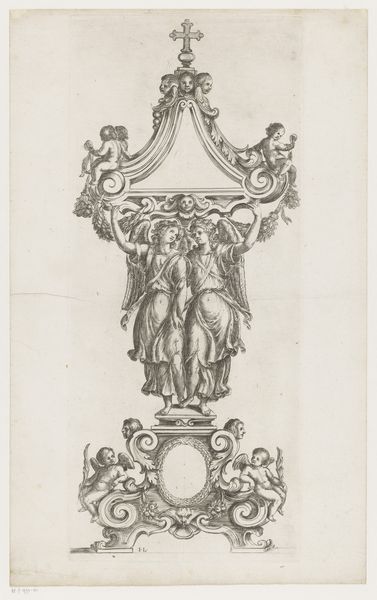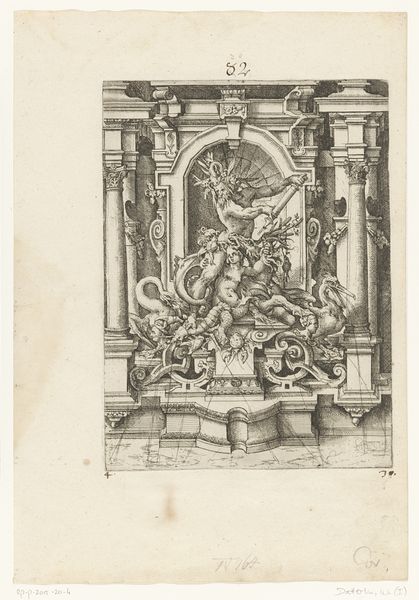
Dimensions: height 340 mm, width 234 mm
Copyright: Rijks Museum: Open Domain
Curator: Look at the detail in this engraving; it’s a print portraying Charles VII Albert, Holy Roman Emperor, likely created sometime between 1725 and 1797. What's your first reaction to this Baroque portrait? Editor: I feel completely overwhelmed, and maybe slightly claustrophobic? All that ornate embellishment really traps the poor Emperor in this sort of gilded cage. It feels incredibly performative, staged for maximum impact. Curator: I think that captures something about the politics of imagery at that time. Baroque art, especially portraiture, was used very deliberately to project power and legitimacy. Every flourish here - the armor, the crown hovering above, the elaborate coat of arms - it's all designed to reinforce his status. It’s pure visual propaganda, in a sense. Editor: And effective, even now! You almost forget there's a person under all that regalia. Did these artists ever get feedback like "Less with the curly-cues, please?" I wonder if the Emperor ever felt swallowed by it all, this massive expectation of sovereignty embodied in the frame? Curator: Interesting point. These kinds of commissions usually had specific protocols, often dictated by the court. Artists were expected to adhere to these guidelines. However, maybe someone like Zimmermann, the artist, also found ways to imbue it with his personal vision. Editor: It does make me consider who this portrait was really "for." Not the Emperor, certainly; maybe it's meant to remind everyone *else* of his greatness, almost a threat framed as a pretty picture. Curator: It might have been a diplomatic gift, a representation of imperial power to be displayed in a foreign court, or one of several to show internal unity and stability. Engravings were more portable and reproducible, thus increasing access of imagery among social class. Editor: It sounds exhausting! Maybe that’s the enduring image here: the constant performance demanded by power. But, hey, the artist certainly earned their wages. Curator: Absolutely. There is such intricacy within each line of engraving that brings the image to life! It reflects an age defined by a very specific relationship between art, power, and perception. Editor: Well, after looking at it closely together, it feels as if that gilded cage expanded a bit, letting some humanity— and some historical truth —peek through.
Comments
No comments
Be the first to comment and join the conversation on the ultimate creative platform.
